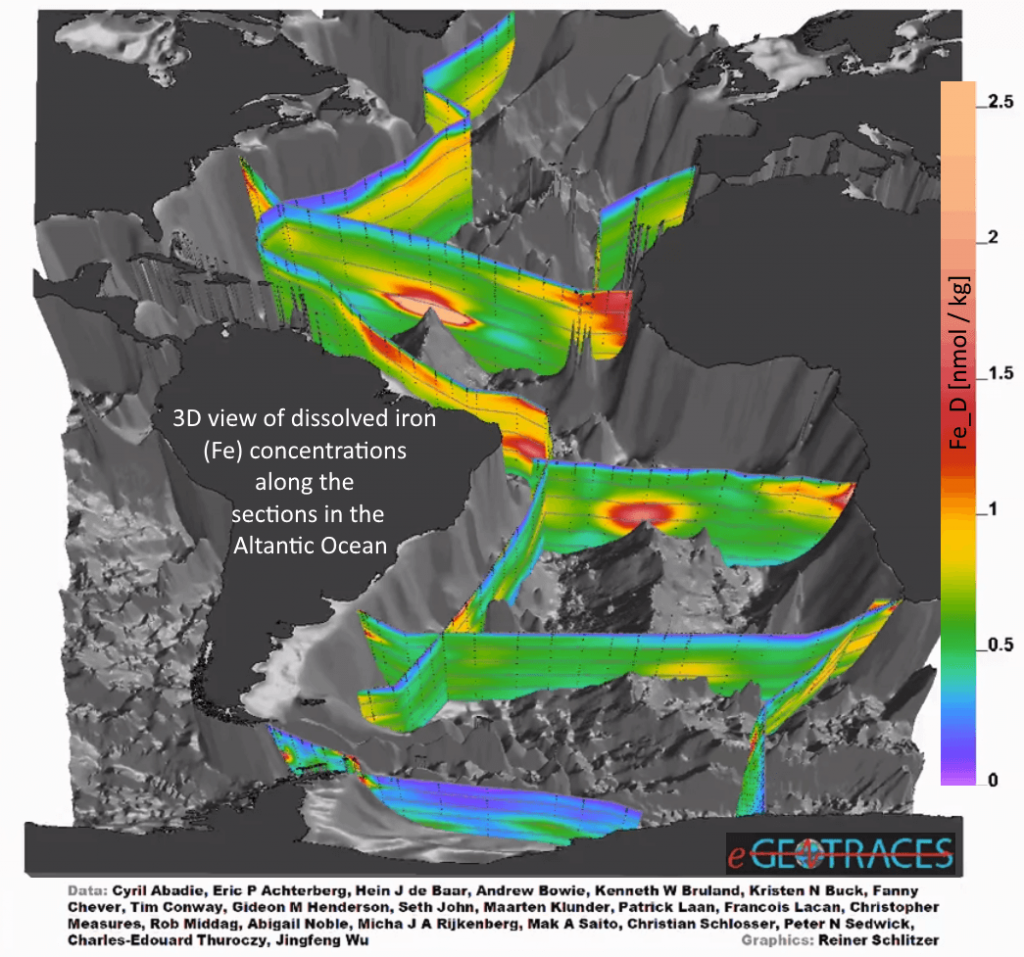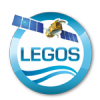Editor: E. Masferer Dodas – Updated on 10/04/2021
GEOTRACES is an international programme in marine geochemistry that aims to improve the understanding of the biogeochemical cycles of trace elements and their isotopes in the marine environment. Under the umbrella of the Scientific Committee on Oceanic Research (SCOR), GEOTRACES coordinates the research activities of more than 35 countries. This coordination is ensured by an International Project Office located at the LEGOS.
The GEOTRACES Programme
The scientific mission of GEOTRACES is to identify processes and quantify fluxes that control the distributions of key trace elements and isotopes in the ocean, and to establish the sensitivity of these distributions to changing environmental conditions.
To achieve this mission, GEOTRACES federates the research activities of more than 35 countries. Researchers from different nations organise oceanographic cruises according to a defined ocean field plan. In order to build a common atlas, the quality and internal consistency of the data are rigorously controlled by intercalibration protocols and supervised by a Standard and Intercalibration Committee. Once validated, data is sent to the GEOTRACES Data Centre (located at the British Oceanographic Data Centre, Liverpool, UK, under the supervision of a Data Management Committee) for processing and finally, made available to the public in an international open access database.
The International Programme Office
The management and coordination of this considerable international effort is provided by an International Project Office (IPO) hosted at LEGOS since January 2010. The IPO is under the scientific responsibility of Catherine Jeandel. Elena Masferrer-Dodas is the executive director.
Trace elements
The chemical elements measured in GEOTRACES are:
- micronutrients, essential for the development of marine life such as: iron (Fe), Zinc (Zn), copper (Cu), cobalt (Co), cadmium (Cd)…
- or contaminants such as mercury (Hg), lead (Pb), and some of the previous ones in high concentrations such as zinc (Zn), copper (Cu) or cadmium (Cd),
- and finally, indicators providing information about the age of the water masses, its origin and circulation…
GEOTRACES data
Data are made available to all in an open source database hosted at the British Oceanographic Data Center (BODC): https://www.bodc.ac.uk/geotraces/data/dp
Two intermediate data products (IDPs) have already been made available once in 2014 and again in 2017. These data are delivered in various formats on the BODC website as well as in the form of an online Atlas (see image).
The data from the French biogeochemical cruises that have been endorsed by GEOTRACES (BONUS GOOD HOPE, KEOPS2, PEACETIME, AMANDES, PANDORA, GEOVIDE, HERMINE, CASSIOPEE, TONGA, SWINGS) are integrated in the LEFE-CYBER database.
Image caption: Distribution of dissolved iron in the Atlantic Ocean. Image from the eGEOTRACES Atlas: http://egeotraces.org

Follow GEOTRACES
Web page: www.geotraces.org; Twitter @geotraces; Facebook: https://www.facebook.com/geotraces/, and/or subscribe to the program mailing list and eNewsletter.
Contacts
Elena Masferrer Dodas, Executive Director (ipoNO SPAM -- FILTER@NO SPAM -- FILTERgeotraces.org).
Catherine Jeandel, Scientific Director.
IPO funding: CNRS-INSU, Université Paul Sabatier/Observatoire Midi-Pyrenées (France); National Science Foundation (USA); GEOMAR-Kiel and AWI-Bremerhaven (Germany).

